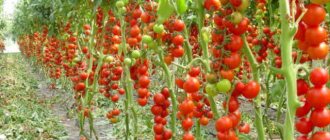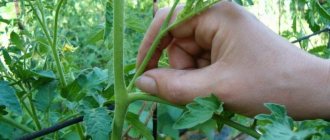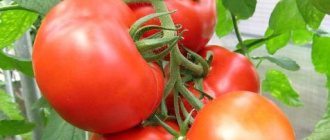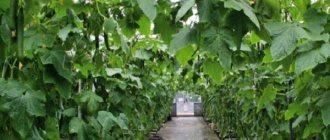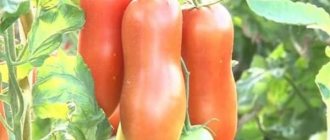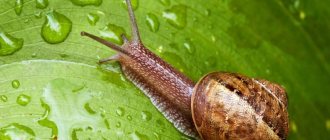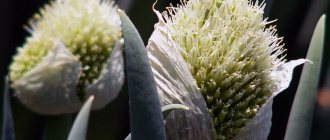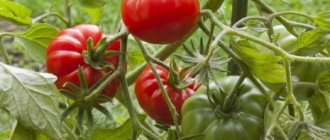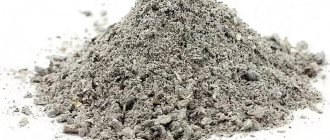When to plant tomato seeds for greenhouse seedlings
For hybrids and early ripening varieties, the ripening period from the time of sowing is 100 days. Taking this into account, seeds for the greenhouse should be sown from February to early April. The sowing time is calculated from the time of transplantation into the greenhouse, counting back 60 days.
Mid-ripening and late-ripening varieties are sown and planted in the ground at the same time as early varieties.
In a heated greenhouse, tomato seedlings can be planted from late February to mid-April. Seeds are sown from early January to mid-February. In this case, the plants are provided with proper heat and light conditions.
Harvesting correctly
Proper cultivation and care of tomatoes results in a bountiful harvest. When collecting fruits, some features should be taken into account .
- The frequency of harvesting tomatoes during spring fruiting (if the seedlings were planted in winter) is once every three days. In the summer, tomatoes are picked daily.
- It is recommended to break off stemless tomatoes.
- You should remove not only red fruits, but also pink ones - this will speed up the ripening of the tomatoes remaining on the bunch.
- Place the harvest in boxes. This will prevent the product from becoming wrinkled or damaged.
Growing seedlings
If store-bought seeds have a bright color (coated), they do not require processing. Untreated seeds are pre-treated.
They are placed in a saline solution (a level tablespoon of salt per liter of water) for 15 minutes. Floating seeds are not suitable for sowing; they are removed.
The seeds that have settled to the bottom are washed, placed in a gauze or fabric bag, and dipped in a solution of potassium permanganate or Fitosporin for 15-20 minutes. After disinfection with potassium permanganate, the seeds are washed.
They are soaked for 1 hour in any growth stimulant, for example Epine. Then they go into the refrigerator (vegetable section) for a day.
After this, the seeds in a damp bag are laid out on a saucer and placed in a warm place for germination. When small roots appear, you can start sowing.
Sowing tomato seeds for an unheated greenhouse is carried out from February to the end of March. Seeds are sown in special cassettes, boxes, containers or pots. For sowing, a fertile mixture is prepared, consisting of 1 part turf, 1 part mature humus, 1 part peat, 0.5 parts sand, wood ash, superphosphate. The soil is disinfected with a hot solution of potassium permanganate.
Before planting, the soil is moistened, grooves are made (in containers, boxes) or depressions (in pots, cups) 1 centimeter deep, seeds are laid out and sprinkled with earth or sand. The crops are sprayed with warm water from a spray bottle. The container with seeds is covered with glass or film and sent to a warm place until the seeds germinate.
After the emergence of seedlings, the shelter is removed and the seedlings are placed in a south or south-east window.
Plants are provided with proper care, including: watering, fertilizing, planting, good lighting, temperature control and hardening.
After the appearance of 2 leaves (on the 7th – 10th day of growth), a dive is performed.
- Each seedling is carefully removed from the container along with the earthen lump and transplanted into a separate pot.
- Watering is done carefully, without touching the plants and only with warm water. Plants need to be watered as the soil in the container dries out.
- A few days before planting, watering stops, this helps fix the earthen ball on the roots. Immediately before watering, the soil is moistened.
Feeding is carried out once every six months. Mineral and organic fertilizers alternate.
If there is a lack of daylight, a fluorescent lamp is installed next to the plants. Additional illumination is carried out in the morning and evening hours.
Before planting (10 days before), the seedlings undergo hardening. They are taken out to the balcony, veranda or greenhouse for 2-3 hours. The residence time increases gradually, reaching up to a day.
Seedlings grow for about 60 days before being transplanted into the ground. The length of the shoot at the time of transplanting the plant should be 30 centimeters, the plant should have 8-10 leaves and a strong stem.
The grown and strengthened seedlings are ready for planting.
Features of growing tomatoes by seeds
Some people welcome sowing tomato seeds in a garden bed in a greenhouse, bypassing the method of growing seedlings, and get an early harvest with minimal physical effort, because the seedling method is a rather labor-intensive process. For this purpose, seeds of early varieties are sown in garden greenhouses.
Others sow tomato seeds directly on the future garden bed, build mini-greenhouses over them, and grow vegetables in this way. It is believed that tomato bushes are not subjected to a kind of “violence” when transplanted from garden cups to a permanent place of growth. Tomatoes take root well in the place where they sprouted and develop qualitatively, growing the root system, stems and leaves. Such bushes are stronger and more resilient, will hurt less and produce abundant flowering and ovary.
Pursuing the goal of growing and obtaining fruits at a later period, at the end of the summer season, it is recommended to sow seeds directly into open ground in the garden bed. They are sown in the same way as under a mini-greenhouse, but there is no need to build a shelter. Such crops are carried out in June, and in September ripe fruits are obtained, with minimal expenditure of physical strength.
Thus, tasty tomato fruits grown from seeds can be obtained both at the beginning of summer and at the end, without using the labor-intensive seedling method at all. This method is simple and easy to implement.
Planting tomato seedlings in a polycarbonate greenhouse
The greenhouse is built in advance so that by the time of planting the ground has time to warm up well. If it is made of polycarbonate or glass, it is built in the fall and cleaned and prepared before planting. If the greenhouse is film, the frame is built in the fall, and the film is stretched in the spring.
The film greenhouse should be covered with 2 layers of film with an interval of 2-4 centimeters. This will protect the bottom film and improve thermal conditions. The top layer is removed in early June. In polycarbonate and glass greenhouses, additional shelter is not required. The greenhouse in which tomatoes will be grown must be well ventilated; for this purpose, windows or ventilation systems are installed.
Loamy and sandy loam soil is most suitable for tomatoes. In the greenhouse, a layer of soil equal to 10 centimeters is removed, in which pests and harmful bacteria are stored. The soil is loosened and treated with copper sulfate.
Before planting, fertilizers are applied to the ground for digging. Per square meter take 1 part of peat, 1 part of steamed sawdust, 1 part of mature humus, 2 cups of wood ash, 1 teaspoon of sodium nitrate, 1 tablespoon of potassium sulfate, 3 tablespoons of superphosphate, 1 tablespoon of potassium magnesium.
The soil for planting should warm up well, to a temperature of 15-17 degrees. To make the earth warm up faster, it is covered with a black film.
Fresh manure and bird droppings should not be applied under tomatoes; this promotes the growth of leaves and inhibits fruiting.
A week before planting, seedlings are treated with boric acid to prevent diseases.
When transplanted into a greenhouse, plants should have 8-10 leaves, a strong thick stem, and a well-developed root.
When planting, the cotyledon leaves are removed. Planting is carried out in the evening or on a cloudy day. Holes 15 centimeters deep are disinfected (a strong solution of potassium permanganate is poured into each hole).
20-30 minutes before planting, the holes are spilled with warm water. Then recesses are made corresponding to the size of the peat pots. Potted plants fall into the holes. The sprinkled earth around the stem is lightly pressed down. If plants are not planted in pots, the seedlings are carefully removed from the container, along with the earthen lump on the root. The tips of the roots are slightly trimmed. This promotes accelerated growth, strengthening the roots, which will begin to grow in breadth.
If the seedlings are overgrown, they can be planted using this method:
Make the holes long and narrow. The furrows are watered. The lower leaves are cut off. Seedlings are planted in a semi-horizontal position. The root is laid out in a furrow, the top remains on the surface in a vertical position. The holes with seedlings are sprinkled with earth.
Each seedling is watered from above with 1-2 liters of water per plant. The upper part of the plants is tied to a peg.
Planted seedlings are shaded for 2-3 days.
When to plant tomatoes in a greenhouse, timing
- Tomato seedlings are planted in a heated greenhouse from late February to mid-April.
- Planting in a greenhouse made of glass, polycarbonate or with an additional film cover takes place from the end of April, and in a film greenhouse - from the beginning of May.
Planting time may vary depending on the climatic conditions of the region.
The air temperature during planting should be 18-22 degrees, and the ground temperature should be 15 degrees. At night the air temperature should not fall below +13 degrees.
Depending on the region, the time for planting seedlings in a greenhouse varies significantly.
- In the South, seedlings are planted in unheated seedlings from mid-April.
- In the Moscow region, seedlings are planted in a greenhouse from late April to mid-May.
- In the Urals and Siberia, planting takes place from early May to mid-June.
The optimal age of seedlings for planting is 50-60 days.
Distance between tomatoes
Beds for tomato seedlings should be 25 - 30 centimeters in height, 60 - 90 centimeters in width. Row spacing should be 60 - 70 centimeters. The planting pattern depends on the varietal characteristics of the tomatoes and the height and structure of the bush.
- In low-growing, early-ripening varieties , it is formed into 2-3 shoots. They should be planted in a checkerboard pattern in 2 rows. Bushes should be placed at a distance of 35-45 centimeters from each other. Row spacing should be 50 centimeters.
- Standard varieties have 1 shoot . They can be planted more densely. The distance between 2 bushes is 25-30 centimeters.
- Tall varieties require more space and must be planted in increments of 60 - 70 centimeters.
Determinate medium-growing varieties with 1 main stem are planted in a checkerboard pattern with a gap between seedlings of 25-30 centimeters and 50 centimeters in rows.
Indeterminate tall tomatoes are placed like this:
- in 1 main shoot - when planting in a checkerboard pattern, the distance between the bushes remains 55-60 centimeters, and in rows 80-85 centimeters;
- in 2 shoots - the distance between plants is 70-80 centimeters, between rows - 85-90 centimeters.
If several different varieties of different heights are planted in a greenhouse, low-growing tomatoes are planted near the walls, medium-growing and tall ones in the 2nd row closer to the aisle.
How many pieces are there in the greenhouse?
In a greenhouse measuring 3 by 6 meters, beds with tomatoes are formed into 2-3 beds. Two beds are planted along the walls, no more than 1 meter wide. Square-bush or two-line planting of seedlings is used.
It is better to arrange the plants in a checkerboard pattern. With this planting, 60 plants are planted. With 3 beds, the outer ones are placed along the walls of the greenhouse, the width is 60 centimeters, the middle bed is 1 meter, and it is double. Row spacing is 40 centimeters.
Early varieties are placed on the outer beds, and mid-early and mid-ripening varieties are placed on the middle beds.
In each row you can plant different varieties with different maturation rates. With this arrangement, about 90 plants are planted.
If the greenhouse measures 3 by 8 meters, the number of bushes increases by 40 pieces.
After landing
During the first seven days, it is better not to disturb the transplanted seedlings; after this time, the soil should be loosened to ensure air flow to the root system.
When planting tomatoes, it is better to immediately install supports for them in order to tie up the bushes as they grow. Pegs or trellises are most often used for this purpose. The material for the pegs can be metal rods or fittings, small diameter plastic pipes, as well as wooden stakes or slats. The length of the supports should be 25-30 cm greater than the height of the bush at its maximum size, since this is the depth to which the pegs are buried in the ground, otherwise it will be uncomfortable to grow tomatoes.
The garter to the trellis can be done 12 days after planting the seedlings. The height of the peg or trellis for indeterminate varieties should be about 2 m. During gartering, stepsoning should be carried out at the same time (break off all the stepsons, except the bottom one, the length of which has reached 8 cm or more). It is best to carry out this procedure in the morning.
Description of the tomato variety Miracle of the Earth, Miracle of the World, Lazy Dreams and others
Caring for tomatoes in a greenhouse
The health of plants and their productivity depend on proper care.
Watering
Watering is not advisable for the first 8-10 days after planting a tomato in a greenhouse. Plants must have time to take root.
Then, 5 liters of water are required per square meter of planting.
Tomatoes need to be watered every 5-6 days. If there is excessive humidity, watering is reduced and the greenhouse is ventilated. The water temperature should be 20-22 degrees.
During flowering, the volume of water increases to 10-12 liters per square meter. Water must be poured at the root so that the leaves, stems, and fruits of the plants remain dry. The best time for watering is considered to be morning.
Garter
Seedlings of tall tomatoes are tied to a peg or trellis for stability immediately upon planting.
Tying up rooted medium-sized bushes begins 20 days after planting in the greenhouse. To do this, use soft garden twine or ties. The twine is tied in a figure eight so as not to harm the delicate stems of the plants. Don't pull the rope too hard!
Formation
In tall hybrid varieties, 1 stem is left during formation; in medium and short varieties, 2-3 stems are left. An additional stem is formed from a stepson that remains on the main stem. 5 – 6 brushes should form on it.
The top of the bush is pinched a month before the end of the growing season. This promotes rapid ripening of established tomatoes. When the fruit begins to ripen, all lower leaves are removed. Any pruning is done in the morning.
Stepsoning
Pruning tomatoes involves removing the side shoots growing from the axil of the leaf. This procedure helps redirect plant forces to the formation of flower clusters and improves productivity.
You need to start planting tomatoes when the plants are 25-30 centimeters high. Some ultra-early low-growing varieties do not require pinching.
In plants grown in 2 shoots, the lower stepson remains, the others are cut off.
Stepchildren are removed once a week, not in bulk. This protects the plants from possible stress that slows down plant growth.
Top dressing
It is necessary to fertilize tomatoes 4-5 times per season. They are fertilized for the first time half a month after planting. The top dressing consists of an infusion of mullein and nitrophoska (1 liter of liquid mullein, 2 tablespoons of nitrophoska per 20 liters of water). One plant requires 1 liter of fertilizer.
1.5 weeks after the first feeding, the second is carried out. Take a tablespoon of superphosphate and the same amount of potassium sulfate per bucket of water or 1 tablespoon of the Fertility drug per bucket and a teaspoon of potassium sulfate per bucket of water. You can also use any complex mineral supplements.
Then fertilizing is applied once every half month. Organic matter must be alternated with mineral fertilizers so that the tomatoes develop evenly.
Tomatoes in a greenhouse. Subtleties of avoiding a practitioner: video
Care
However, preparing for planting and sowing seeds is only half the battle. How to grow seedlings in a greenhouse or greenhouse, especially if you need them for sale? In order for your seedlings to grow really strong and healthy, you need proper care of the seedlings, which is quite troublesome.
- It is important to carefully monitor the appearance of the plants. If the foliage has turned pale, then it’s time to fertilize. The best recommendation here is ready-made complex fertilizers. Before watering, you need to dilute the mineral mixture in the proportion of 1 teaspoon per 1 liter of water.
- When it is cloudy outside, it is better to keep the temperature in the greenhouse low, to about plus 14-15 °C, so that the seedlings do not stretch out. Elongated seedlings do not need to be watered heavily, let the soil dry out a little.
By following these simple tips, we hope you will be able to grow strong and healthy seedlings that will delight you with delicious fruits all summer and until the end of September.
If you find an error, please select a piece of text and press Ctrl+Enter.
Diseases and pests
Don’t forget to ventilate the greenhouse daily. The window or door can be opened all day long. This promotes free access for insects that will pollinate tomatoes and is a prevention against fungal and viral diseases.
Tomatoes are affected by various types of rot: top rot, white rot, brown rot, root rot (anthracnose), sulfur rot (botrytis).
Blossom rot affects fruits on the first 2-3 clusters.
Watery spots appear on the tops of tomatoes, darker than healthy tissue. The spots grow, darken, press in, harden, the top of the fruit becomes flattened and folded. Affected tomatoes will ripen quickly.
One of the causes of the disease is irregular watering and an excess of magnesium, a lack of calcium in the soil. Adjusting watering and fertilizing prevents disease.
White rot appears when seedlings are planted in cold soil. Signs of the disease are wilting of the upper part of the plant, rotting at the bottom of the stem. The stem near the root softens and becomes covered with a whitish coating. Affected tomatoes become soft and watery.
Maintaining the required temperature and humidity allows you to avoid illness. When rot appears, diseased plants with fruits are destroyed.
The most dangerous fungal disease of tomatoes is late blight . First, brown spots with a pale green rim appear on the plant; a whitish coating forms on the underside of the foliage in wet weather. In dry weather, the leaves dry out, in wet weather they rot, and the tomatoes become unfit for consumption.
In a greenhouse, the disease manifests itself when air humidity is above 80% and air temperature is 17-22 degrees during the day and 10 degrees at night.
To protect tomatoes from disease, they should not be grown in the same bed every year. The best predecessors for them are legumes, cabbage, cucumbers, and green crops. Seeds are thoroughly disinfected before sowing, and plant tops are removed and burned in the fall.
Preventive spraying with fungicides (Profitom Gold, Abiga-Peak, 1% Bordeaux mixture) is carried out 5 days after planting the seedlings in the ground. Repeated treatment is carried out after 5-10 days. The last spraying is permissible 20 days before harvest.
by gray rot in cool weather at the end of the growing season. Watery spots on tomatoes merge together, turn white, rot, and become moldy.
With root rot , the root collar rots and the plant withers. Rot spreads when seedlings are planted in poorly heated soil. Affected plants are removed from the beds.
Tomato streak - manifests itself as necrotic brown stripes and spots throughout the plant. The disease spreads by pinching, shaping and is carried by pests. Seed disinfection protects against disease.
In case of damage, diseased plants are destroyed and mineral fertilizers are applied. When pinching and shaping plants, rubber gloves and working tools are treated with a solution of potassium permanganate. Aphids and whiteflies are being controlled.
Pests threaten tomatoes, as do diseases.
The Colorado potato beetle , which lays eggs on the lower part of the leaves and eats various parts of the plant, can be destroyed with the drugs Apache, Bison, Golden Spark, Tanrek, Confidor and Commander. To combat harmful insects, bushes and soil are thoroughly sprayed in the evening when eggs are laid en masse.
Whiteflies and aphids are destroyed by the preparations Aktara and Actellik.
Preparing the soil and premises for the gardening season
In the fall, preparatory work begins in the greenhouse for the next season. After all the plants have been removed, they begin to disinfect the structure of the structure. Do not forget about personal safety: you should stock up on protective gloves and a respirator. To disinfect the wooden frame, the room is fumigated with sulfur. To do this, sulfur powder is mixed with kerosene and laid out on metal sheets previously laid out over the greenhouse area.
Description of tomatoes Evpator, Accordion, Intuition and others
You should first check the tightness of the room and seal existing cracks. The mixture is set on fire and the room is closed. Sulfur smolders for approximately 5 days. Such measures help get rid of fungal and bacterial infections, as well as insect pests.
If the greenhouse has a metal frame, you should not fumigate the room with sulfur - this will cause corrosion of the frame elements. In this case, you should spray the surfaces of the walls and ceiling with bleach. To prepare a solution for 10 liters of water, take 0.4 kg of bleach. After preparation, the solution should sit for several hours (about 5 hours). After treatment, the room should be closed for three days. After the specified time has passed, the inside of the room is washed with warm water; for better cleaning, ordinary brushes are used. Metal structures are doused with boiling water, and wooden ones are treated with diluted copper sulfate.
How to prepare the soil
It is recommended to completely replace the soil in the greenhouse every 5 years. If it is impossible to carry out such an event, it is recommended to disinfect the soil in the fall . The following agents are suitable as disinfectants:
- dolomite flour (50 g of substance is used per 1 sq. m.);
- garden lime;
- Bordeaux mixture;
- copper sulfate;
- boiling water.
Due to the sensitivity of tomato roots to low temperatures, it is recommended to arrange high beds . Experienced vegetable growers recommend additional insulation of the beds. To do this, it is recommended to remove the layer of soil in the greenhouse and pour a 10 cm thick layer of sawdust or pine needles onto the cleaned surface. Straw will also work.
The next layer of the same thickness is laid from compost. The last layer is previously removed soil. The thickness of this layer is 20 cm. If the returned soil is poor in composition, then it is advisable to add half a bucket of humus to each square meter. mixed in equal parts with peat. Spread a mixture of ash and sand on top at the rate of 1 liter jar per square meter. m. soil.
After all manipulations, the soil is covered with straw . In winter, a layer of snow is placed on the straw, which helps moisten the soil and prevent it from freezing.
Another way to increase soil fertility in a greenhouse is to grow green manure. The following plants have a beneficial effect on the soil:
- mustard;
- lupine;
- beans;
- oats;
- alfalfa;
- rapeseed;
- barley.
These plants are valuable sources of organic matter: 3 kg of green fertilizer successfully replaces 1.5 kg of manure. The green mass is embedded in greenhouse soil to a depth of 3 cm half a month before planting tomato seedlings. In spring, the soil is dug up and compost or nitrophoska is added.
The best varieties for the greenhouse
In greenhouse conditions, plants actively grow and produce an excellent harvest. Breeders have created many varieties for greenhouses, some of the best of which are considered to be:
- Bull's heart is a tall, mid-early variety. The bush reaches 2 meters in height. The fruits are fleshy, large, weighing up to 1 kilogram. Heart-shaped. The color is pink-raspberry.
- Miracle of the Earth is a high-yielding drought-resistant variety. The tomatoes are large, pink, heart-shaped. Weight reaches 400-500 grams.
- Samara F1 is an indeterminate early ripening hybrid variety. Up to 8 fruits ripen on a cluster. Tomatoes are round. Weight reaches 80 grams. The variety is resistant to tobacco mosaic, fusarium, and cladosporiosis. Tomatoes do not crack and are stored well.
- Hurricane F1 is an early ripening hybrid variety. Fruiting occurs 90 days after seed germination. Round tomatoes. The skin is smooth. The color is red, uniform. The weight of the fetus reaches 90 grams.
- Ildi F1 is a tall, mid-season hybrid variety with clusters of orange or yellow tomatoes. The taste is sweet.
- Mazarin is a drought-resistant variety. The shape of the fruit is similar to strawberries. The harvest ripens in 110–115 days. The plant is resistant to late blight.
- Raspberry ringing F1 is an early ripening hybrid variety. The bush is undersized. Resistant to major tomato diseases and temperature changes. Tomatoes are round, raspberry-colored. The fruits do not crack.
- Pink honey is a tall variety. The bush reaches 1.5 meters. The fruits are pink and large.
- Monomakh's Cap is a mid-season variety. The bush is tall. Red tomatoes are slightly ribbed and large. The variety is resistant to many diseases.
- Red date F1 is a mid-late hybrid variety with red, oval, date-shaped fruits.
- Orange Spam F1 is an early ripening hybrid variety. Tomatoes ripen in 100 days. The bush is tall. The plant can withstand temperature changes. The fruits are round-heart-shaped, orange in color, resistant to cracking.
How to sow seeds correctly?
The rules for sowing and growing tomatoes using the seedless method, that is, by conventionally sowing seeds in a greenhouse bed or in open ground, are exactly the same, the peculiarity is that the chosen location is at the discretion of the owner.
- Crops in greenhouses. The production of tomato seeds in greenhouse beds is carried out at the same time as for obtaining seedlings. This period falls at the end of March. If the greenhouse is heated all winter, then sowing can be done earlier than the specified period - the resulting harvest will be earlier. If the greenhouse structure “rests” in winter, and heating of the room begins at the end of February, then by the beginning of March, the greenhouse soil will be completely warmed up and ready for growing vegetable crops.
- Sowing in open ground in a garden bed. Sowing seeds in open ground is carried out immediately after the onset of warm and stable weather. The end of April and the beginning of May is quite a suitable period for sowing tomato seeds in open ground in the garden. There will be no more frosts, the ground is slightly warmed up, and the constructed mini-greenhouse will help the seeds acclimate and germinate in the soil.
- Sowing in the summer in the garden, with a later harvest. There is probably no specific time for sowing seeds to obtain late tomato fruits. In this matter, you need to focus on weather conditions and the location of your site. Just buy seeds whose packaging indicates that they offer tomatoes with a late ripening period, and there must be a clause indicating the month of sowing in open ground. You can safely navigate by these indicators. Typically, sowing seeds to obtain autumn fruits occurs at the end of June.
